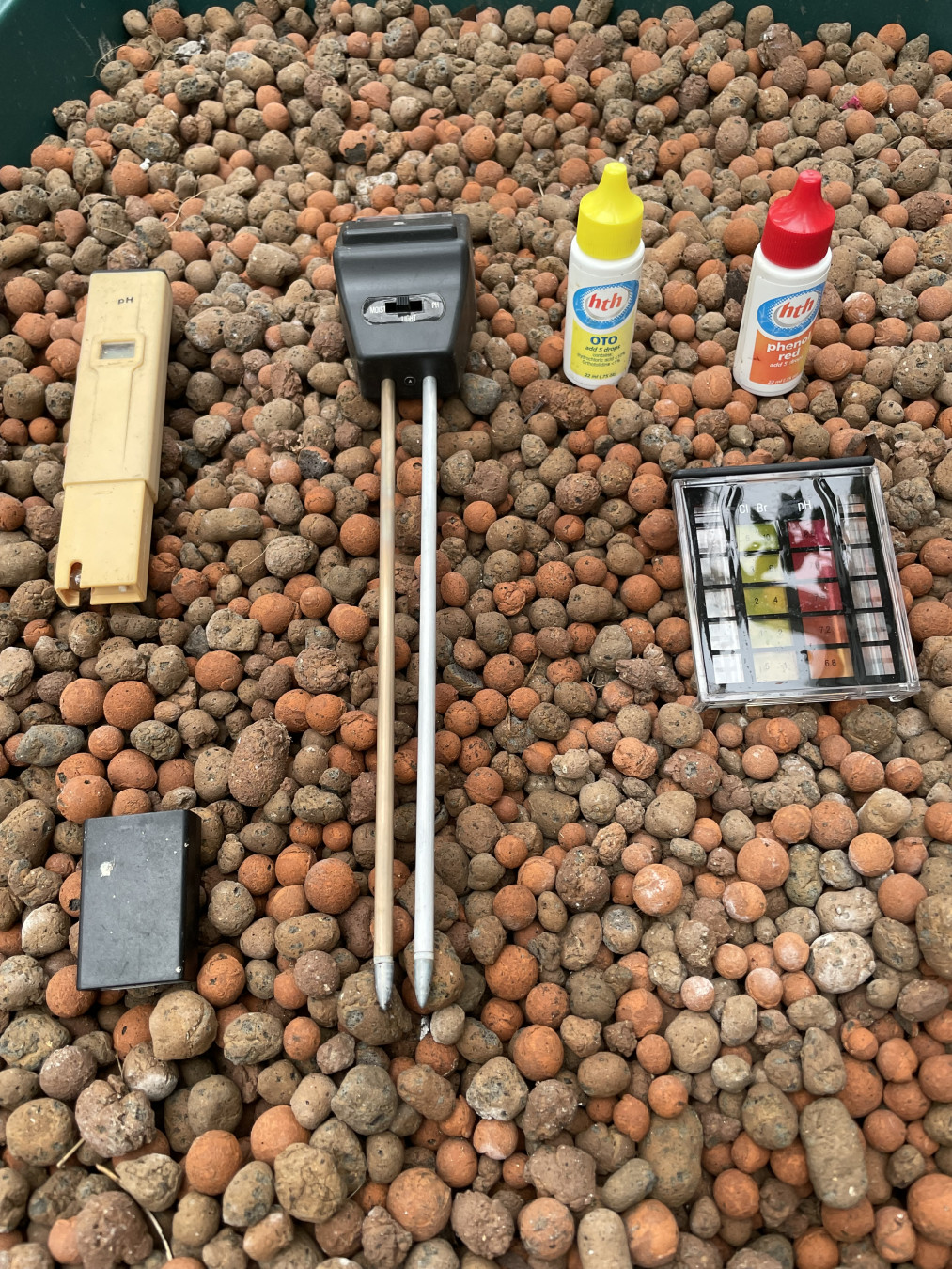
On the left, the tip of the yellow container is immersed in water and the pH value appears on the tiny screen. This device only measures pH.
The middle device with twin prongs measures light levels, soil moisture levels and ph. In general, more expensive devices measure more items.
Have You Checked Your Soil pH Lately?
You probably don’t think much about it, but the pH of your soil – its acidity or alkalinity – can matter greatly to how well your plants grow. And what many gardeners don’t realize is that they can be inadvertently altering soil pH every time they water their plants. If you use rainwater, which is generally acidic in the northeast, you may be increasing the acidity of the soil too. Conversely, if you have a water softener in your home and water your plants from the tap, the soil will become more alkaline because of softened water’s alkalinity. Switching between these two water sources can cause significant swings in pH that you never intended and may be bad for your plants.
What is pH?
pH, which stands for potential hydrogen, measures the relative amounts of free hydrogen ions and free hydroxyl ions in a substance, hydroxyl ions consisting of a hydrogen atom attached to an atom of oxygen. If something has relatively more free hydrogen ions it’s acidic, whereas if it contains relatively more free hydroxyl ions it’s alkaline. The degree of acidity or alkalinity is what the pH scale assesses. This scale ranges from 0 to 14, with 7 being neutral. Acidic values are those below 7, and alkaline values are those above 7. Black coffee, for example, has a pH of 5 whereas lemon juice, which is more acidic, has a pH of 2. On the opposite side of the scale, baking soda has a pH of 9, whereas the much more alkaline ammonia has a pH of 12. Garden soil typically has a pH between 5 to 7, so it’s slightly on the acidic side.
Why does pH matter?
pH matters because different plants grow best in soil with a specific pH, with the pH affecting their ability to take up micronutrients. For example, if pansies and petunias are grown in a higher than optimum pH soil, they may suffer from a nutrient deficiency and have poor growth. That’s why it’s very beneficial to know the pH of your soil as well as the pH of the water that you put on your plants.
How do you measure soil pH?
There are several ways to measure soil pH. For the home gardener, taking a sample of your soil in a sterile container to your local extension service will give you the most accurate reading. However, it’s often not very practical to keep doing this on a regular basis. That’s why you may want to measure soil pH yourself.
The least expensive, although only moderately accurate method of doing so is to use litmus paper. Start by adding to a small sample of your soil a little distilled water (which has a neutral pH of 7), forming a soil slurry. Then dip a piece of litmus paper into the slurry and see what color it turns. A color chart provided can enable you to gauge the degree of acidity or alkalinity.
A much more accurate and less messy method is to use a soil testing meter. These can range in price from $20 to as much as $110, with the cost generally being an indicator of accuracy, versatility (measuring moisture as well, for example), and also ease of use (such as offering a digital readout). A good soil-testing meter, to my mind, is well worth the investment.
When you start to measure soil pH, be sure to keep a log of the readings that also notes how well your plants are doing. By keeping such a log you’ll come to know how to obtain optimum pH for the various plants you grow.


